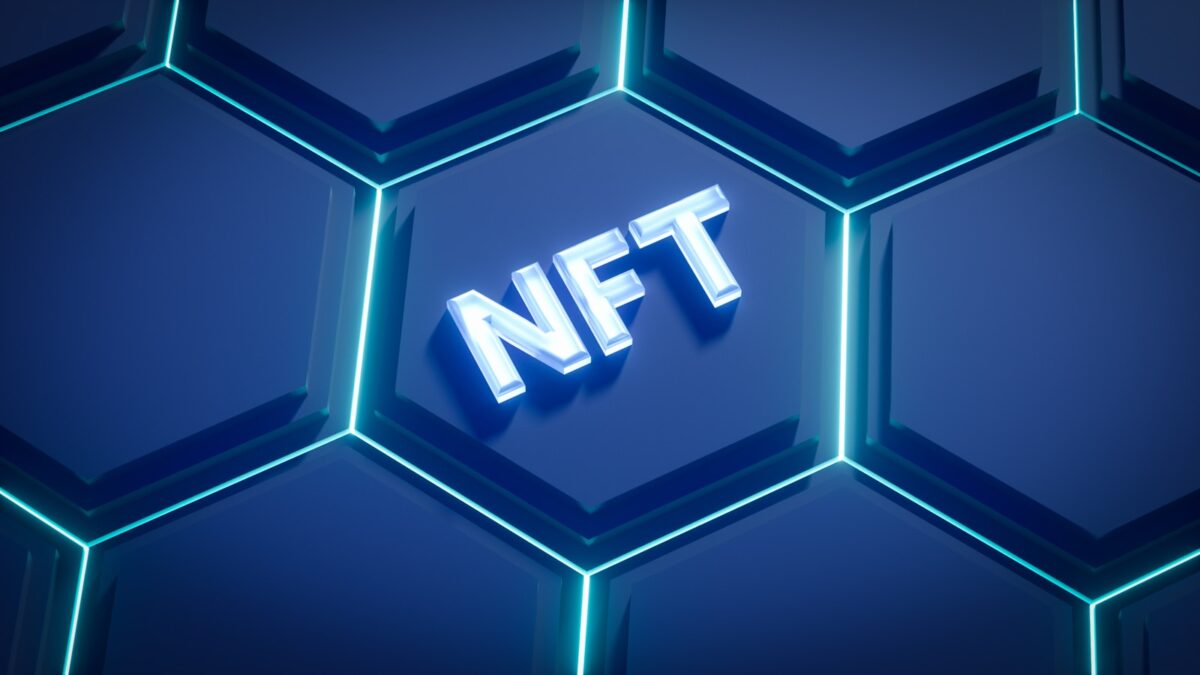
What is cryptocurrency exactly

Cryptocurrency represents a form of digital money secured by cryptographic techniques and maintained through decentralized networks. Unlike traditional currencies controlled by central authorities, this technology relies on distributed ledgers known as blockchain, which record transactions transparently and immutably. Understanding these basics enables one to grasp how value is transferred without intermediaries, ensuring trust through code rather than institutions.
The core innovation lies in the use of blockchain technology–a continuously growing list of records, called blocks, linked using cryptography. Each block contains transaction data validated by network participants via consensus algorithms. This structure prevents double-spending and fraud, providing a secure foundation for digital asset exchange. Exploring these mechanisms reveals why such systems can operate independently from banks or governments.
Grasping the fundamentals involves examining how wallets store cryptographic keys that authorize fund movements on the network. Public keys function like addresses visible to all, while private keys grant access control over assets. Learning this interplay between cryptography and decentralized validation forms a practical introduction to understanding the reliability and resilience embedded within these financial innovations.
Understanding the Fundamentals of Cryptocurrency
The term in question defines a form of digital asset secured through cryptographic techniques, enabling decentralized peer-to-peer transactions without reliance on traditional financial institutions. This monetary unit operates independently from centralized authorities, leveraging cutting-edge technology to ensure transparency, security, and immutability of transaction records.
This overview explores foundational aspects that differentiate such currencies from conventional fiat systems by focusing on their underlying architecture, consensus mechanisms, and the role of distributed ledger technology.
Definition and Core Principles
At its core, this form of electronic money is characterized by the use of blockchain, a decentralized ledger that chronologically records all transactions across a network. The blockchain functions as a tamper-resistant database maintained collectively by participants (nodes), ensuring data integrity through consensus algorithms like Proof of Work or Proof of Stake. These algorithms validate new entries and prevent double-spending without requiring intermediaries.
The concept hinges on cryptographic hashing and public-private key pairs for secure ownership verification and transfer authorization. As an example, Bitcoin–introduced in 2009–pioneered this model by implementing a transparent yet pseudonymous transaction system resistant to censorship or fraud.
Technological Infrastructure
The infrastructure supporting these tokens integrates multiple layers: the blockchain protocol layer handles data storage and validation; the network layer facilitates peer-to-peer communication; and the application layer offers interfaces for wallets, exchanges, and smart contracts. Smart contracts are programmable scripts deployed on certain blockchains (e.g., Ethereum) that automatically execute actions when predefined conditions are met, expanding functionality beyond simple transfers.
- Consensus Mechanisms: Algorithms such as Delegated Proof of Stake optimize scalability while maintaining decentralization.
- Cryptographic Security: Elliptic Curve Digital Signature Algorithm (ECDSA) ensures transaction authenticity.
- Decentralization: Network nodes independently verify transactions without centralized control.
Experimental Insights into Transaction Validation
A practical investigation involves analyzing block confirmation times across different networks to assess throughput and latency variations. For instance, Bitcoin’s average block time is approximately 10 minutes due to its Proof of Work design, while alternative chains like Solana achieve sub-second finality using Proof of History combined with Proof of Stake. Exploring these differences reveals trade-offs between security guarantees and operational efficiency inherent in protocol design choices.
Bridging Blockchain Concepts with Traditional Finance
The immutable ledger resembles traditional accounting books but extends capabilities through decentralization and automation. In contrast to centralized ledgers managed by banks prone to single points of failure or manipulation risks, distributed ledgers distribute trust among multiple validators worldwide. This shift invites questions about regulatory frameworks adapting to inherently borderless assets secured mathematically rather than institutionally.
Navigating Future Exploration Paths
An investigative approach encourages examining emerging protocols incorporating zero-knowledge proofs or sharding techniques aimed at enhancing privacy and scalability respectively. Experimentation with testnets can deepen understanding by enabling hands-on interaction with wallet creation, token transfers, or smart contract deployment within controlled environments without real-world financial risk. Such explorations foster analytical skills necessary for evaluating evolving architectures critically.
This methodology not only builds technical literacy but also cultivates informed perspectives on potential implications arising from integrating cryptographically secured currency models into existing economic systems globally.
How Cryptocurrency Works
The core fundamentals of this innovative form of money rely on a decentralized ledger known as blockchain technology. This distributed database records transactions across multiple nodes, ensuring transparency and immutability without the need for a central authority. By verifying and grouping transactions into blocks, which are cryptographically linked in chronological order, the system achieves security and consensus through consensus algorithms such as Proof of Work or Proof of Stake.
At its basics, this type of digital asset operates through peer-to-peer networks where participants validate and record transfers independently. Each transaction is digitally signed using asymmetric cryptography, guaranteeing authenticity and preventing double-spending. Users control their funds via private keys that correspond to public addresses on the network, enabling secure ownership and transfer without intermediaries.
Introduction to Blockchain Mechanics
The underlying technology combines cryptographic techniques with distributed computing to create an immutable history of monetary exchanges. Nodes maintain copies of the entire ledger, constantly synchronizing to confirm new blocks added by miners or validators. The consensus mechanism ensures that all participants agree on the current state of accounts, mitigating fraud risks inherent in centralized systems.
For example, Bitcoin’s implementation uses Proof of Work where miners solve complex mathematical puzzles to append new blocks. This process requires substantial computational resources but secures the network by making attacks economically unfeasible. Alternative protocols like Ethereum’s Proof of Stake reduce energy consumption by selecting validators based on staked tokens rather than raw computational power.
The interaction between wallets and smart contracts further extends functionality beyond simple value transfers. Smart contracts are self-executing scripts deployed on blockchain platforms that automatically enforce predefined rules when triggered by transactions. This programmable logic introduces automation possibilities such as escrow services or decentralized finance operations directly embedded within the protocol layer.
Examining technical case studies reveals how various projects optimize these concepts for different goals: privacy-focused networks integrate zero-knowledge proofs to conceal transaction details; scalable solutions implement sharding or layer-two protocols to increase throughput; while stablecoins tie their value algorithmically or via reserves to minimize volatility commonly observed in native tokens.
Understanding Blockchain Role
The definition of blockchain lies in its function as a decentralized ledger that records transactions in a secure, transparent, and immutable manner. This technology removes intermediaries by enabling peer-to-peer verification of data, fundamentally altering how money and value transfer systems operate. A thorough introduction to the basics reveals that each block contains a cryptographic hash of the previous block, timestamp, and transaction data, creating a continuous chain resistant to tampering.
Exploring the fundamentals, blockchain’s capacity to provide trust without centralized authorities is crucial for redefining money management mechanisms. In practical terms, this system ensures consensus through algorithms like Proof of Work or Proof of Stake, which validate transactions and maintain network integrity. These protocols demonstrate how distributed technology can safeguard asset ownership while preventing double-spending – a key challenge in digital fund transfers.
The Technical Architecture Behind Blockchain
Examining technical case studies offers insight into blockchain’s layered structure. For instance, Bitcoin’s protocol employs an append-only ledger where miners solve complex mathematical puzzles to add new blocks. Ethereum extends these principles by integrating smart contracts–self-executing code that automates agreements without human intervention. These applications underline blockchain’s role beyond simple money exchange towards programmable financial instruments.
A step-by-step methodology for understanding blockchain begins with analyzing transaction flows: from initiation, broadcasting to nodes, validation via consensus algorithms, to final inclusion in the chain. Experimentally observing testnets enables hands-on exploration of transaction confirmation times and network scalability factors. Such practical investigations clarify how this technology transforms traditional notions of money into programmable tokens secured by cryptography and distributed consensus.
Types of Cryptocurrencies
The fundamentals of decentralized digital assets can be categorized into several types based on their underlying blockchain technology, intended use cases, and consensus mechanisms. Distinguishing between these categories enhances comprehension of the ecosystem and supports informed analysis. Primarily, cryptocurrencies fall into three broad classes: transactional tokens, utility tokens, and security tokens.
Transactional tokens represent electronic money designed explicitly for peer-to-peer value transfer without intermediaries. Bitcoin serves as the archetypal example, introduced in 2009 with a clear definition aimed at creating a decentralized currency outside traditional banking systems. Its blockchain operates on a proof-of-work consensus algorithm that secures transactions and maintains an immutable ledger. This type focuses on serving as an alternative to fiat currencies through transparent supply control and censorship resistance.
Utility Tokens and Their Role in Blockchain Ecosystems
Utility tokens provide access to specific services or functions within a blockchain platform rather than functioning purely as money. Ethereum’s Ether exemplifies this category by enabling users to pay computational fees for executing smart contracts on its programmable blockchain infrastructure. These tokens derive value from their utility in facilitating operations such as decentralized applications (dApps), governance mechanisms, or data storage solutions embedded within the network.
Security tokens differ fundamentally by representing ownership or investment contracts tied to external assets like equities or real estate. Their introduction aligns with regulatory frameworks aiming to digitize traditional financial instruments while leveraging blockchain’s transparency and immutability. These tokens must comply with securities laws, often requiring identity verification and offering holders rights such as dividends or voting power within the issuing entity.
- Stablecoins: Designed to maintain price stability by pegging their value to fiat currencies or commodities; examples include Tether (USDT) and USD Coin (USDC). Their fundamental role is minimizing volatility typical of other cryptocurrencies while retaining blockchain benefits.
- Privacy Coins: Specialized in enhancing transaction confidentiality beyond conventional blockchains; Monero and Zcash utilize advanced cryptographic techniques like ring signatures and zero-knowledge proofs to obfuscate user identities and amounts.
An experimental approach towards understanding each classification involves analyzing transaction data structures, consensus algorithms’ efficiency, and token economics within live networks. For instance, comparing gas fee fluctuations during high network activity on Ethereum offers insights into utility token demand dynamics. Meanwhile, privacy coins invite exploration into cryptographic proofs ensuring anonymity without compromising ledger integrity – a fascinating intersection of mathematics and distributed systems engineering.
This structured classification invites further inquiries: How do emerging consensus models like proof-of-authority alter token function? What are the implications of regulatory shifts on security token adoption globally? Investigating these questions through practical experimentation with testnets or simulation environments reinforces foundational knowledge while encouraging critical scrutiny of ongoing innovations within the field.
Using Cryptocurrency Safely
Secure management of digital assets begins with understanding the basics of private key protection and transaction verification. Since blockchain technology records every transfer of money in a transparent, immutable ledger, safeguarding access credentials is paramount to prevent unauthorized fund withdrawal. Employing hardware wallets or cold storage solutions significantly reduces exposure to online threats compared to software-based wallets connected to the internet.
Another fundamental approach involves verifying the authenticity of platforms used for trading or storing tokens. Utilizing reputable exchanges that implement robust security protocols–such as two-factor authentication (2FA), withdrawal whitelist settings, and regular security audits–minimizes risk from phishing attempts and hacking incidents. Engaging with platforms that provide transparent audit trails aligns with the underlying principles of decentralized systems.
Technical Principles and Practical Recommendations
Exploring blockchain’s consensus mechanisms reveals how network validation supports trustless transactions without intermediaries. However, this also places responsibility on users to verify transaction details before signing digitally. Mistakes such as sending assets to incorrect addresses are irreversible due to blockchain’s immutable nature. Testing small transfers initially can serve as an experimental method for newcomers to confirm operational procedures safely.
Developing familiarity with wallet seed phrases enhances recovery capabilities if devices are lost or compromised. These mnemonic codes act as master keys granting control over associated funds; thus, secure offline storage and avoiding digital copies prevent exploitation by malicious actors. Additionally, segregating funds into multiple wallets based on usage frequency creates layers of defense against potential breaches.
Incorporating educational tools like blockchain explorers enables direct observation of transaction confirmations and block propagation times. This hands-on investigation demystifies abstract technological processes and builds confidence in independently verifying fund movements. Encouraging curiosity through systematic experimentation strengthens one’s grasp on how immutable ledgers ensure transparency while emphasizing personal diligence in asset protection strategies.
Conclusion on Storing Crypto Assets
Securing tokenized assets requires a rigorous application of fundamentals rooted in cryptographic principles and distributed ledger technology. Hardware wallets, multisignature schemes, and hierarchical deterministic key structures represent concrete methods to safeguard private keys against both physical threats and cyber exploits.
The introduction to these storage mechanisms reveals that the definition of money itself is evolving–from tangible currency to programmable units secured by immutable code. This shift demands mastery over the basics of secure key management, backup protocols, and transaction authentication to maintain asset integrity across decentralized networks.
Technical Insights and Future Directions
- Cold Storage Solutions: Employing offline devices reduces exposure to network-based attacks, leveraging isolated environments for signing transactions. Advances in air-gapped hardware and secure element chips enhance tamper resistance.
- Multisignature Wallets: Distributing control among multiple parties or devices mitigates single points of failure, increasing resilience without sacrificing accessibility–a principle aligned with threshold cryptography research.
- Hierarchical Deterministic (HD) Wallets: Generating master seeds that produce an infinite set of addresses supports privacy and operational efficiency while simplifying recovery procedures through mnemonic phrases standardized by BIP39.
The expanding ecosystem necessitates integrating biometric safeguards, decentralized identity verification, and quantum-resistant algorithms into custody frameworks. Such enhancements will address emerging vulnerabilities as computing paradigms shift.
The trajectory of storing programmable value underscores a broader transformation in how financial instruments are defined and transacted. As blockchain protocols advance toward interoperability and scalability, custody solutions must evolve accordingly–balancing convenience with uncompromised security.
This continuous interplay between theoretical constructs and practical implementations invites ongoing experimentation. Researchers and practitioners should investigate adaptive storage architectures that anticipate future threats while promoting user sovereignty over digital wealth embedded within decentralized infrastructures.


